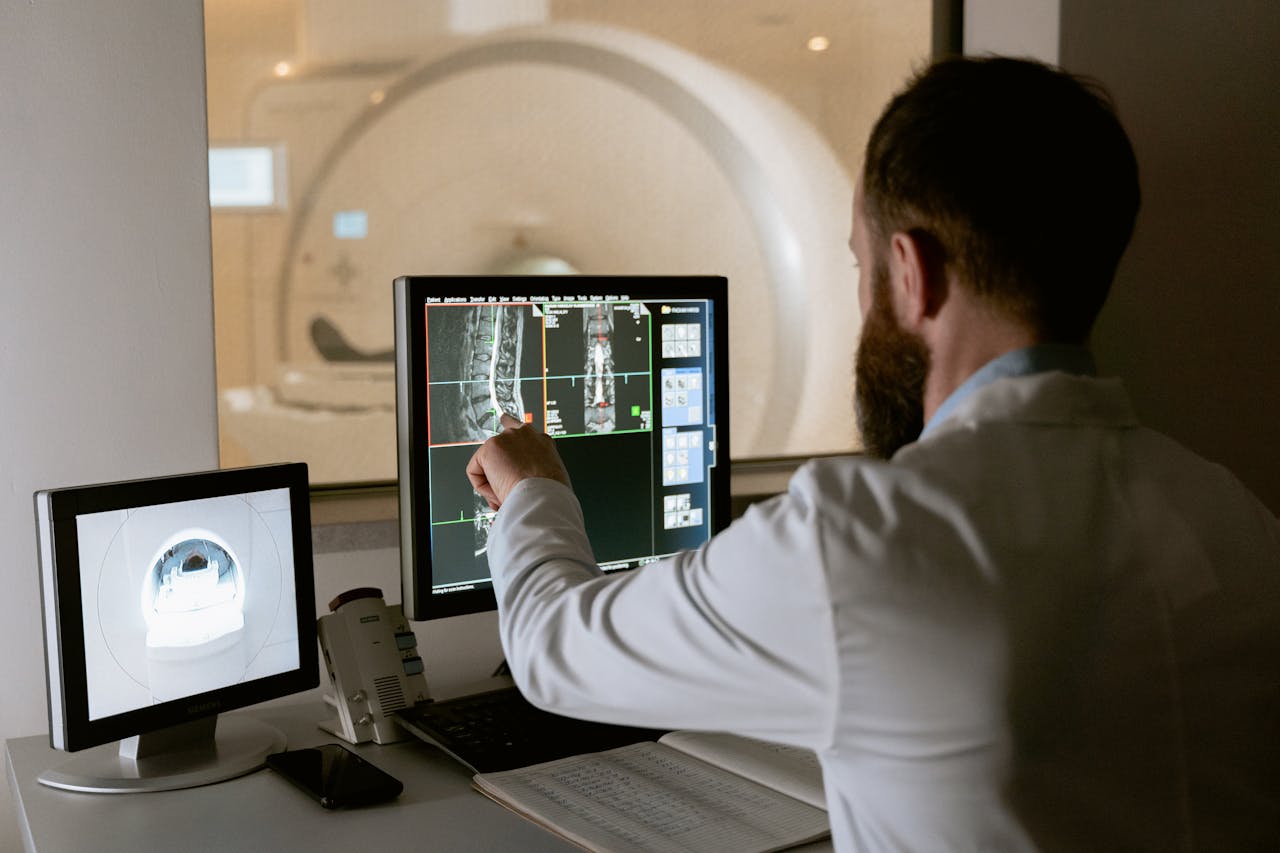The Rise of AI Medical Imaging: How Artificial Intelligence Is Transforming Diagnostics
AI Medical Imaging is revolutionizing healthcare, improving diagnostic accuracy and efficiency across radiology, oncology, and other medical fields. From lung cancer screening to breast cancer detection, AI-powered medical imaging is leveraging deep learning and vast datasets to achieve diagnostic accuracy that, in some cases, surpasses human radiologists.
But does this mean AI Medical Imaging is always superior to human expertise? Could AI eventually replace radiologists? This article explores the latest data, case studies, and industry trends to answer these critical questions.
1. AI vs Doctors: A Data-Driven Comparison
To evaluate AI’s diagnostic accuracy, let’s examine some key research findings:
| Institution | Medical Field | AI Diagnostic Accuracy | Doctor Diagnostic Accuracy |
|---|---|---|---|
| Stanford University | Lung Cancer Detection | 94.6% | 91.2% |
| University of Oxford | Breast Cancer Screening | 87.0% | 84.2% |
| MIT | Skin Cancer Detection | 90.5% | 86.8% |
| Johns Hopkins University | Retinal Disease Analysis | 92.3% | 89.1% |
These numbers indicate that AI has outperformed doctors in specific imaging tasks. However, AI lacks independent decision-making capabilities and is not universally applicable across all medical fields.
2. Strengths and Challenges of AI in Medical Imaging
2.1 Key Advantages of AI
✅ High-speed data processing – AI can analyze thousands of medical images in seconds, whereas doctors require hours or even days.
✅ Reduced misdiagnosis and missed diagnoses – AI has demonstrated exceptional performance in early cancer detection, such as breast cancer and lung nodules.
✅ Continuous learning and improvement – AI models improve over time by learning from new datasets, whereas human experience accumulates at a slower rate.
2.2 Challenges and Limitations
❌ Data bias – AI models trained primarily on Western patient data may be less accurate for other populations, such as Asian or African patients.
❌ Lack of clinical reasoning – AI relies solely on image data, without incorporating patient history, symptoms, or other critical factors.
❌ Regulatory and ethical concerns – Issues such as data privacy, liability, and AI regulation remain unresolved.
3. How Hospitals Are Using AI for Imaging Diagnosis
Many leading hospitals and healthcare institutions have already implemented AI-powered imaging tools to improve diagnostic efficiency. Here are some notable examples:
- Mayo Clinic: Uses AI for cardiac imaging analysis, reducing misdiagnosis rates by 12%.
- UK National Health Service (NHS): Integrates DeepMind AI for retinal disease screening, achieving an accuracy rate of 92% while cutting diagnosis time by 50%.
- Harvard Medical School-affiliated hospitals: Leverage AI for lung CT scans, enhancing early detection of COVID-19 and lung cancer, with a 15% improvement in accuracy.
4. Will AI Replace Radiologists?
Despite AI’s impressive performance, it is unlikely to replace human radiologists entirely. The most effective model for the future is “AI + Human Collaboration”:
✔️ AI assists with preliminary screening and data analysis, improving efficiency.
✔️ Doctors provide clinical judgment and comprehensive assessments to ensure diagnostic accuracy.
✔️ Combining AI imaging with electronic health records (EHRs) enables more personalized and precise treatment plans.
5. FAQ: Common Questions About AI in Medical Imaging
5.1 Is AI more accurate than doctors in medical imaging diagnosis?
In certain areas, such as lung cancer, breast cancer, and retinal disease detection, AI has surpassed doctors in accuracy. However, human expertise remains critical for complex and rare conditions.
5.2 Is AI-powered diagnosis widely used in hospitals?
Yes, major hospitals, including Mayo Clinic, UK NHS, and Johns Hopkins, have integrated AI for medical imaging diagnostics.
5.3 Can AI make mistakes in diagnosis?
Yes, AI can produce incorrect results due to insufficient training data or biased datasets. Doctors still need to review and verify AI-generated reports.
5.4 Will AI completely replace radiologists?
No, AI serves as an assistant rather than a replacement. Human expertise is essential for clinical decision-making and patient care.
The Future of AI in Medical Imaging
AI-powered medical imaging is demonstrating significant potential. As deep learning and computer vision technologies advance, AI applications in healthcare will continue to expand. However, AI is not a standalone solution; rather, it is an essential tool that enhances doctors’ diagnostic accuracy and efficiency.
If you’re interested in the future of AI in medical imaging, share your thoughts in the comments below!







